#blackfoot people
Explore tagged Tumblr posts
Photo
[ begin id: a black and white photo of three Blackfoot people, two adults who are sitting on the ground and one child who is standing in between them. All three are smiling at the camera, and are wearing traditional garb. / end id ]
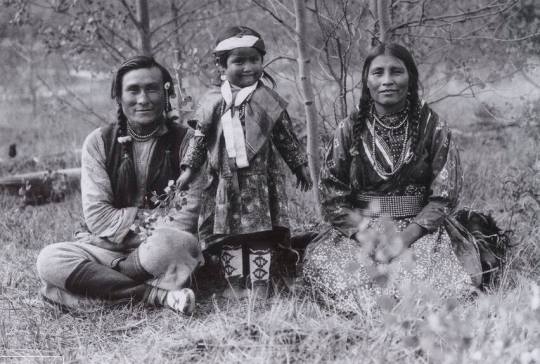
A very beautiful image of these smiley blackfoot. It seemed everything was alright…
Photograph by Mary T. S. Schaffer in 1907.
144K notes
·
View notes
Text
It was Indigenous People's Day so I made some intersex + Indigenous flags
Since I've been on a roll in making intersex flags. First: flags for the three major types of Indigenous groups whose lands were stolen to create the country I live in (Canada):
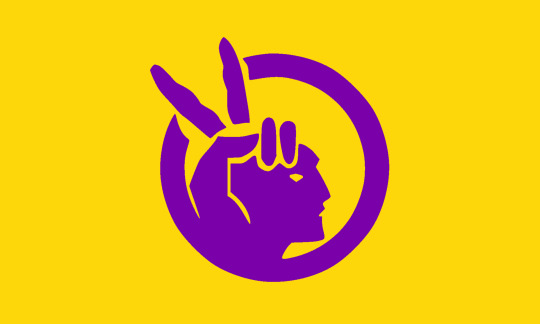
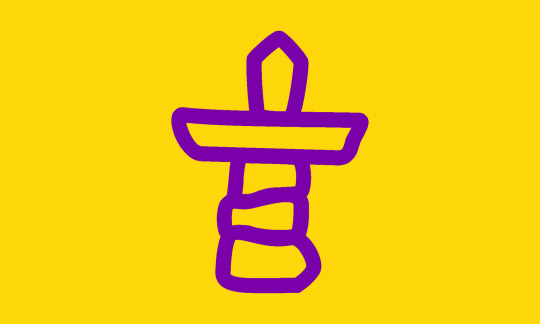
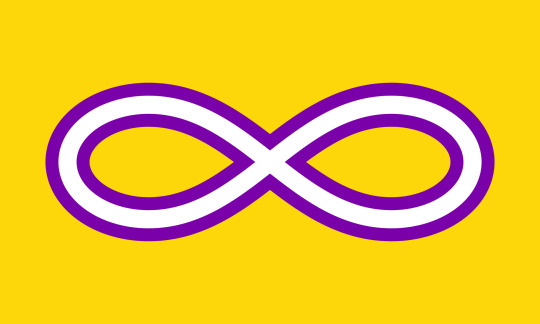
Left: intersex and First Nations (American Indian Movement) Middle: intersex and Inuit Right: intersex and Métis
Then I made some intersex flags for some specific First Nations whose cultures I have at least basic familiarity with: Left: Haida ................... Middle: Huu-ay-aht ......... Right: Musqueam
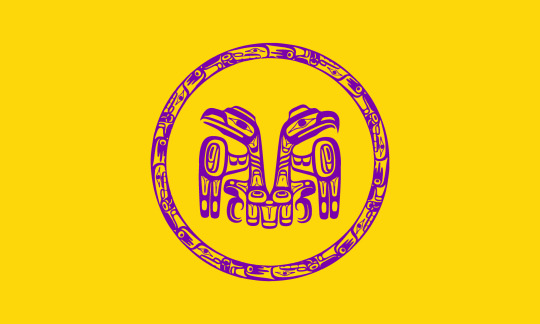
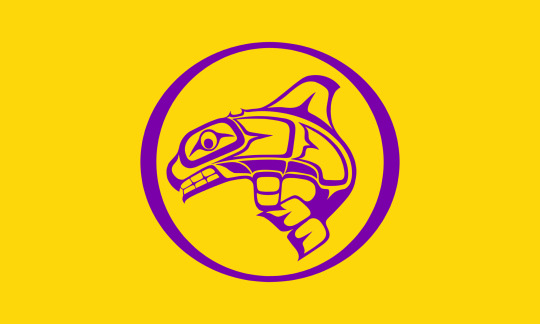


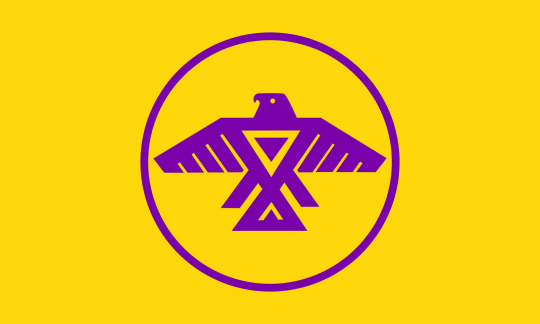
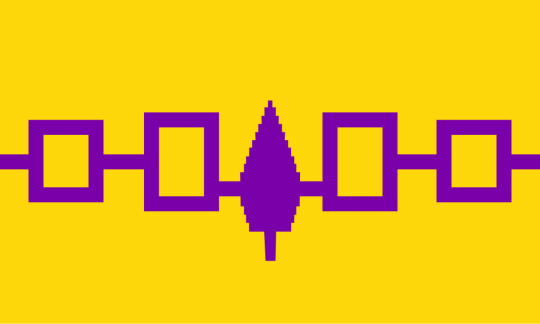
Left: Blackfoot ........... Middle: Anishinaabe ...... Right: Haudenosaunee
Note: The last three are confederacies of multiple nations. Order is based on geography, going west to east.
Personal Note: I am a settler and am not a member of any of these nations. I've moved many times in my life, and these nations are the rightful stewards of the lands that I personally feel I have the most connection to. 💜
Tagging for archival: @intersexflags @varsex-pride @radiomogai @beyond-mogai-pride-flags
#intersex#actually intersex#indigenous peoples day#fuck thanksgiving#indigiqueer#intersex flags#american indian movement#inuit#metis#haida#huu-ay-aht#musqueam#blackfoot#anishinaabe#haudenosaunee
289 notes
·
View notes
Text

#warriors#warrior cats#blackstar#blackfoot#shadowclan#rogue#arc 1#art#OK SO I HAVE A LOT TO SAY ABOUT THIS DESIGN#blackstars canon description/official artwork is like. Genetically impossible for a cat to have#i dont care about genetics that much when it comes to family trees but i like to design cats that look like they could exist irl#if that makes sense.#so for blackstar. you can do a few things. you can do his impossible canon design which is perfectly valid#you can make him a colorpoint/'siamese' type and make his face and tail black#although i dont think some people realize that colorpoints ALWAYS have blue eyes. you cant keep his canon eye color like that#if youre concerned about him looking like a real cat#but what i did here is hes a black cat with lots of vitiligo#which is not actually that popular but makes a whole lot of sense! and he gets to keep his eye color#especially considering he could be named blackkit cause hes all black at birth#but by the time hes a warrior he has lots of white spotting and only his paws remain all-black so they call him blackfoot#anyway im here to spread vitiligo blackstar propaganda#also i jsut think this dude is neat. hes a neat character i like him#guy who commits war crimes but redeems himself enough to get into heaven#wc design
155 notes
·
View notes
Text

Portrait of Stu-mick-o-sucks (Buffalo Bull's Back Fat, Head Chief of the Kainai Nation) (1832) by George Catlin (1796–1872). Smithsonian American Art Museum.
#george catlin#19th century art#male portrait#smithsonian#native american#canada#first nations#american art#american painter#1832#1830s#1830s art#19th century#native#kainai#alberta#blackfoot#blackfoot confederation#indigenous#indigenous peoples#native americans#indigenous rights#land back#canadian#smithsonian art museum#smithsonian museum#algonquian#portrait#portraiture#canadian history
18 notes
·
View notes
Text
I feel like conversations about things like cowboys desperately needs an understanding not just of class and settler colonialism, but also just like, literally what the basic thing even is? Idk like there's a difference between "cow herder, who was often Black or Indigenous" and "law enforcement or bandit who murders Black and Indigenous peoples as a hobby." The image of the cowboy is often associated with the latter, but the reality is that the former is more accurate in the first place.
Anyway, point is, I feel like there should be a separation between the idea of a cowboy and the idea of wild west law enforcement, cause there's no way my native ass is being accused of glamourizing settler colonial violence when up here, the horseback law enforcement wore ugly ass red coats with stupid round hats while the native ranchers wore the duds.
#natives were and still are literally famous for our horsemanship#they had to kill off our horse breeds because we were so dope with them#white settlers literally didn't know the basics of ranching#and needed Black and Indigenous people as their labour force for successful ranches#obviously there are more complications and nuances#but it's a gross mischaracterization to claim cowboys were white settlers#one that conveniently erases Indigenous peoples and Black people from historical records#Blackfoot Confederacy in particular has tons of traditions around horsemanship#please learn about ranching life from more than just colonial western films
10 notes
·
View notes
Text

BlackFoot Indian
#blackfoot indians#aboriginal indians#melanin#black history#black people were here before columbus#eugenics#walter plecker#dane calloway#2pac shakur
11 notes
·
View notes
Photo

Ancient Indigenous lineage of Blackfoot Confederacy goes back 18,000 years to last ice age, DNA reveals | Live Science
Members of the Blackfoot Confederacy have an ancient lineage that goes back 18,000 years, meaning that Indigenous peoples living in the Great Plains of Montana and southern Alberta today can trace their origins to ice age predecessors, a new DNA study reveals.
In the new study, published April 3 in the journal Science Advances, a team of researchers led by two members of the Blackfoot Confederacy investigated the genetic history of their tribes.
Comprising four related tribes — the Blackfeet, Kainai, Piikani and Siksika — members of the Blackfoot Confederacy historically included nomadic bison hunters and trout fishers. Their territory was divided in the mid-19th century by the U.S.-Canadian border, and in the late 19th century both countries' governments forced the Indigenous confederacy members to settle on reservations. ...
8 notes
·
View notes
Text
Question: which Warriors novella is your favorite? Add it in the tags or replies.
List of novellas for reference
#warriors#i was thinking about how many of the recent novellas seem to be quickly forgotten when many of the older ones seem to be popular#so i'm curious what people actually like the most#mine is either ravenpaw's farewell or blackfoot's reckoning
20 notes
·
View notes
Text
Walking in the Dinosaur Park Formation
Welcome to The Dinosaur Park Formation, Alberta Canada 75 Million years ago.

View On WordPress
#adobe photoshop#alberta#artistatwork#blackfoot#blackfoot nation#blackfoot tribe#canada#Centrosaurus#Commissions Open#Concept Art#Daspletosuarus#Digital Art#DigitalPainting#dinosaur#dinosaur park#Dinosaur Provincial Park#dinosaurs#Environment Design#hadrosaur#indigenous#indigenous people#Lambeosaurs#paleontology#Palo Art#Parasaurolophus#plesiosaur#Prosaurolophus#Pterosaurs#royal Canadian mounted police#Styracosaurus
7 notes
·
View notes
Text
Today is Truth & Reconciliation Day
Today we remember.
Today we honour the lives lost in residential schools across Canada.
Today we honour the families affected by residential schools.
Today we honour the survivors of residential schools.
Today we honour the many diverse First Nation, Métis, Inuit and Indigenous peoples across the country.
Today we remember what horrors Canada has done to those peoples.
Today we listen to Elders, and many First Nations peoples.
Today we respect those peoples and their stories
Today we respect, listen, remember.
#truth and reconciliation#indigenous#métis#blackfoot#iroquois#inuit#cree#dene#haudenosaunee#first nations#indigenous peoples#reconciliation#orange shirt day
19 notes
·
View notes
Text

Honor shirt with glass beads and horse hair. United States, Blackfoot Confederacy, 1880-1910
Much of the regalia worn by men reflected their position within political, military and religious societies. Only recognized leaders could wear shirts like this one, trimmed with human hair or horsehair. Hair locks, whether a gift of allegiance or taken from an enemy or an animal, embodied personal honour. While First Peoples dress has adapted to changing times, regalia remains an important emblem of personal achievement and honour.
#mccord stewart museum#reddit#artefactporn#munakatasennin#honor shirt#shirt#glass beads#horse hair#united states#blackfoot#blackfoot confederacy#1880s#1890#1900s#1910#american indian#first peoples#native american#indigenous
6 notes
·
View notes
Text
Why it's important to understand WHY things are bad instead of just that they are bad: a case study
I once responded to someone saying that certain Indigenous religions (Cherokee, Blackfoot, & Cree) and Christianity (among other religions) are all monotheistic.
Someone then jumped in with the comment

In my original response, I literally just said that the religions mentioned above are monotheistic (religions with only one god). It was purely a statement of fact.
Yet this person was acting as though I had said something truly offensive simply by nature of Christianity and Indigenous religions being mentioned together.
Which is not the kind of comparison between those religions that is problematic.
Further context: I'm Indigenous.
Not from any of those three Nations in particular (I'm Nambikwara) but I am Indigenous.
And for the record?

Cherokee theology:

Blackfoot theology is monotheistic (at least in the area I live).
I worked closely with a Blackfoot FMNI Liason at a school with a high Blackfoot demographic in order to ensure that the library books about FMNI people were accurate.
In my work I heard another Blackfoot employee say that “the Creator and the Christian God are one and the same, we simply knew him by different names”.
Cree theology:
My Canadian hometown is in Cree territory. As such, I have strived to learn about the culture of the people whose land I live in.
Cree theology speaks of a single deity, known as ᒪᓂᑐ (Manito) or ᑭᓭᒪᓂᑐ (Kisemanito), and as such is monotheistic.

Source: Cuthand, Doug. Askiwina: a Cree world. Coteau Books, 2007.
#christianity#religion#indigenous peoples#indigenous culture#cree culture#cherokee culture#blackfoot culture#monotheism#i'm just saying#virtue signaling
3 notes
·
View notes
Photo

'Digging for the Red Roots' by Mahir Adal-Razzaaq El — “Native American contact with Islam began over one thousand years ago...”
#islam#pre columbian#america#american indians#indigenous tribes#indigenous people#moors#moorish#treaties#american history#cherokee#blackfoot#indian muslims
26 notes
·
View notes
Text

"Hardy Women Warriors Inherit Skill, Stamina of Ancestors," Toronto Star. October 30, 1943. Page 2. --- ADVANTAGE of inherited ability is held by Private Minnie Spotted Wolf, when she picks up a bow and arrow on the archery range at the New River, N.C., army camp.
OF A SEAFARING RACE, these Norwegian "Wrens" were right at home during recent exercises taken aboard the destroyer Glaisdale, and none complained of sea-sickness.
#minnie spotted-wolf#wrens#royal norwegian navy#united states marine corps#world war ii#women at war#women in uniform#blackfoot confederacy#siksika#american indians#indigenous people#indigenous history
5 notes
·
View notes
Text

Bison calves stand in Saskatchewan’s Wanuskewin Heritage Park, the first to be born in the the Archaeological Site and Cultural Centre in more than 150 years. Photo By WanuskewinHeritage Park
How Canadian Bison Have Been Brought Back From The Brink In Saskatchewan
In Saskatchewan’s Wanuskewin Heritage Park, bison are a vital piece of the indigenous cultural history and have been brought back from the brink to help rewild fragile grasslands.
— By Karen Gardiner | Published June 3, 2023 | July 29th, 2025
Dr. Ernie Walker has heard enough tired takes on Saskatchewan’s flat landscape. “A lot of people refer to the prairies as big and empty or useless,” he says, indignant, as he leads me around Wanuskewin Heritage Park, an archaeological site and cultural centre 15 minutes from the Saskatchewan city of Saskatoon. “That’s not it. What’s significant about the prairies is that it’s subtle.”
Standing under a big blue sky, amid dry rolling grassland that stretches uninterrupted all the way to the horizon, I think I understand the misconception: lacking mountains and with sparse trees, this isn’t exactly the type of landscape that wallops you with its dramatic features. But if there’s anyone who can convincingly argue for the value of this place, it’s Walker.
The park’s founder and chief archeologist, Walker has spent four decades with his hands in Wanuskewin’s dirt, turning up artefacts — including stone and bone tools, amulets and even gaming pieces — that have whispered to him stories of this land’s significance. Working here as a ranch hand in the early 1980s, he convinced his boss that the land had great archaeological importance. That slowly set in motion the park’s establishment, which involved a rare-for-the-time collaboration between Indigenous and non-Indigenous people.
“When visitors look at the landscape, I’m always interested in what they’re actually seeing,” Walker continues. “They need to know the story behind this place.” The story here is of 6,000 years of almost uninterrupted human occupation. That narrative was drummed into the land by millions of bison hooves until the animals met a violent end. But now, the bison are back and they’re writing a new chapter.
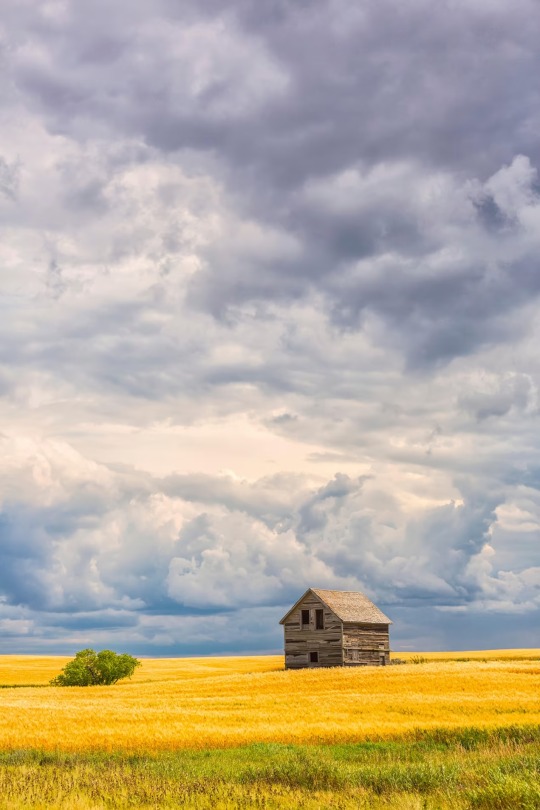
An abandoned building stands along the roads of rural Saskatchewan. Photo By Design Pics Inc, Alamy
A Place of Sanctuary
In the Nēhiyawēwin (Plains Cree) language, ‘Wanuskewin’ roughly translates as ‘sanctuary’. Lying at the fertile confluence of the South Saskatchewan River and Opimihaw Creek, it was a gathering place for the people of the Northern Plains — the Blackfoot, Cree, Ojibwa, Assiniboine, Nakota and Dakota — who all followed bison herds and found sustenance and shelter here. Before European settlement, this land was home to vast numbers of bison (also known as buffalo) and the multitudes of species they supported, from the insects that thrived in the bison’s manure and the birds that fed on those insects to the humans that were dependent on the bison’s meat and skin.
But then came catastrophe. Bison were deliberately slaughtered to near extinction, a tactic used by settlers to starve Indigenous people into submission. “Around 400 years ago, there were 26 to 30 million bison on the Great Plains in North America,” Walker says. “By the 1890s, there were just 1,200.”
With the bison and their way of life gone, Plains people were left with little choice but to sign Treaty Six, an 1876 agreement with the British Crown that opened up the land for European settlement and promised one square mile of land to every Indigenous family of five. They were then corralled onto reserves.
“What if I were to come to all of your houses, empty your fridges and say you guys have to move to the s****y part of town?” Wearing a fringed buckskin waistcoat adorned with beaded flowers, Jordan Daniels, a member of the Mistawasis Nêhiyawak (Cree) Nation, raises his voice above the prairie wind to ensure we understand the depth of his ancestors’ loss. I’ve left Walker for now and joined a small group along Wanuskewin’s bison viewing trail where we’ll see and learn about Wanuskewin’s reestablished herd.
“The bison were a central part of our existence,” Daniels explains. “We made our teepees out of them. They were a main food source. Everything we needed for sustenance came from these animals.” There was also an emotional connection. Many Indigenous people consider bison kin, and the animal is ubiquitous in Indigenous stories and art. “They played a central role in our beliefs and in our way of seeing the world around us,” explains Daniels.
Bringing back the bison to Wanuskewin was always the park’s founders’ dream. In 2019, the animals finally came home. Six calves from Saskatchewan’s Grasslands National Park established the herd, followed by an additional five animals from the United States with ancestral ties to Yellowstone National Park. The herd, which has grown to 12, is now helping to restore native grasses. North America’s grasslands are one of the most endangered biomes in the world and bison, a keystone species, can help restore balance between animals, land and humans.
While grazing, Daniels explains, bison’s hooves aerate soil and help to disperse seeds, and by wallowing (rolling around), they create depressions that fill with rainwater and stimulate plant growth and provide habitat for microorganisms, amphibians and insects. “They’re ecologically unmatched,” he says. “But, I feel, nothing outweighs the cultural factor of having bison back here.”
Daniels’ connection is intensely personal. He explains that his seven-times great grandfather was Chief Mistawasis, the first chief in Saskatchewan to sign on to Treaty Six. Before signing, Daniels says, Mistawasis “had spent his life living how our people have done since time immemorial, out on the plains hunting bison. And today, I’m able to look at animals that are genetically close to the ones that he’d have interacted with. It’s a very impactful and powerful thing.”

Tianna McCabe, a Navajo, Arapaho and Cree powwow dancer, explains the significance of her ornate regalia. Photo By Concepts/KareeDavidsonPhotography.Com
Happy To Be Home
Wanuskewin is about protecting the future as much as preserving the past. I meet with young Indigenous people who demonstrate aspects of their cultures, once suppressed, now thriving. Tianna McCabe, a Navajo, Arapaho and Cree powwow dancer, explains the significance of every fabric and colour of her ornate regalia before hopping her way through an Old Style Fancy Shawl dance, her feet landing with each staccato beat of a drum.
As the day eases into night, I follow a group to the top of a bluff to meet Métis chef Jenni Lessard, who’s prepared our Han Wi (‘moon dinner’ in Dakota language). As well as bison tenderloin, sourced from a nearby farm and seasoned with yarrow and sage, we eat pickled spruce tips and bannock bread with chokecherry syrup. Sipping wild mint and fireweed tea, we gather around a fire, rejoined by Dr Ernie Walker to hear “a miraculous story”.

Dezaray Wapass, a Fancy Shawl dancer, performs in Wanuskewin National Park. Photo By Concets/KareeDavidsonPhotography.Com
In August 2020, Walker was visiting the bison herd when he noticed a boulder protruding from a patch of vegetation the animals had worn away. Seeing a groove cut across the top of it and, brushing away the dirt, he spotted more cuts and realised what he was seeing was a petroglyph. The boulder turned out to be a ‘ribstone’, so-called because its engraved motifs represent bison ribs. Three more petroglyphs were later unearthed, as well as the stone knife used to carve them.
What the bison did when they uncovered those petroglyphs was to complete the story of Wanuskewin. “We’d always lamented that, here in the park, we’ve got [archeological sites like] buffalo jumps, teepee rings and North America’s most northerly medicine wheel, but we didn’t have any rock art,” explains Walker.
Wanuskewin is on the tentative list for UNESCO World Heritage designation. The discovery of the petroglyphs, Walker believes, has boosted its chances. He tells me: “The stones complete everything you’d expect to find on the Northern Plains, but you don’t usually find those things within walking distance of each other.”
Dressed in a white Stetson, blue jeans and cowboy boots, Walker retains the appearance of a young ranch hand but, after 40 years of arguing for this place, I sense he’s content to rest a little. “I’ve told this story many times before,” he says. Now, the bison have picked up Wanuskewin’s epic story and it’s time to let them tell it once again.
#Canadian Bison#Saskatchewan#Wanuskewin Heritage Park#Archaeological Site and Cultural Centre#Dr. Ernie Walker#Chief Archeologist#Nēhiyawēwin (Plains Cree) Language#Wanuskewin (Sanctuary)#Blackfoot Cree Ojibwa Assiniboine Nakota and Dakota#Jordan Daniels#Mistawasis Nêhiyawak (Cree) Nation#Indigenous People#Grasslands National Park#Tianna McCabe a Navajo Arapaho and Cree Powwow Dancer 💃#Old Style Fancy Shawl Dance 💃#Métis chef Jenni Lessard#Han Wi (‘Moon Dinner’ in Dakota Language)#Chokecherry Syrup#Petroglyphs#UNESCO World Heritage
9 notes
·
View notes
Text
Over half of Riverstar's Home is just DOTC recap... oh they were stretching so bad on this one
#and apparently theyre all suuuper long chapters like good lord#feel like now that novellas are probably axed that we're gonna get a loooot more SEs like this where they clearly cant tell a full SE#but its apparently just the only thing they're capable of doing outside of main series now#they put riverstar oon the poll like ''oh ha ig people kinda like him but surely he wont win over ivypool'' and then freaked out when he wo#this is a half joke theory but also wasnt blackfoot meant to get an SE and was up on a poll but got rejected#and just got a novella instead?
6 notes
·
View notes